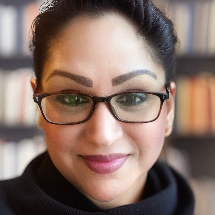Learn / How to Deal With Depression
How to Deal With Depression


April 11th, 2023| Clinically Reviewed by
Key Points
- Explore types and signs of depression.
- Learn the different causes of depression.
- Find healing with therapy and medications.
Depression is far from uncommon—globally, it affects 5% of adults1. That amounts to 280 million people. It’s the leading cause of disability, can lead to suicide, and affects more women than men. It’s clearly a prevalent condition.
But you can heal from mild, moderate, and severe depression.
If you think you might be depressed and want to discuss your immediate treatment options, talk with your doctor. Together, you can find treatment and a new sense of hope. You could even go to a rehab for depression.
If you or someone you love is contemplating self-harm, call or text the National Suicide & Crisis Lifeline at 988 to get immediate support.
What Are The Types of Depression?
Knowing that depression can present itself in a number of ways1, and understanding that symptoms can appear and stay for different lengths of time, can help you create a plan to deal with depression. Understanding your particular symptoms, how they appear, and their patterns can help you embrace your own unique plan for living fully.
Usually, the symptoms of depression fall into a more specific diagnosis2. Talking to your doctor about your symptoms can help you understand your diagnosis and your emotions—and how to navigate them.
For example, if you have mild but long-lasting symptoms, your doctor might diagnose you with dysthymia, or persistent depressive disorder (PDD). There’s also postpartum depression, which affects women after giving birth, and seasonal affective disorder (SAD), which describes depression symptoms that only arise during winter. Bipolar depression and major depressive disorder can both have more severe symptoms, like suicidality.
Signs of Depression
Doctors make a diagnosis based on your number of symptoms, their frequency, and how long they last. Usually, symptoms lasting 2 weeks or longer point to a form of depression.
Some signs of depression2 include feeling empty, sad, or hopeless. Losing interest in your hobbies or daily life is common too. You might also:
- struggle to concentrate
- feel excessively guilty
- lose hope
- sleep too much or too little
- feel tired
- lose your appetite
- entertain the thought of suicide
The symptoms of depression could feel like fog that never really goes away, touching all areas of your life. But where does the fog come from?
It could actually come from a few places at once.
The Causes of Depression
Depression has a cause3, whether it creeps on slowly or strikes suddenly. A non-exhaustive list of them includes:
- Biological factors & susceptibility
- Sudden life changes
- Trauma
Biological factors usually mean a chemical imbalance4. If this happens, the imbalance could lead to the symptoms associated with depression, like low mood. And you might be biologically susceptible to depression5 if it runs in your family.
A sudden life change, like moving, starting a new job, or losing someone you love can also lead to depression. Trauma can cause depression5 too, whether it’s underlying trauma or something you’re well aware of, like a car accident.
It’s also common for depression to co-occur with other conditions5. For example, addiction can contribute to depression. Dual-diagnosis treatment can help you recover from both conditions at once.
But for each cause and type of depression, you do have opportunities to heal.
Treatments for Depression: Medication, Therapy, and More
Depression treatments fall into 2 general categories: medication and therapy4. And when talk therapy supports medication, the combined benefits are greater than either alone.
Medication Management
Medications for depression6 include SSRIs (selective serotonin reuptake inhibitors) and MAOIs (monoamine oxidase inhibitors). Because of their success rate and low side effects, doctors typically begin with SSRIs. MAOIs can help with treatment-resistant depression.
But in most cases, medications work best combined with talk therapy3—they’re one part of a combined treatment effort.
Therapies for Depression
Cognitive Behavioral Therapy (CBT)
Cognitive behavioral therapy (CBT) challenges your perception6. Its success in breaking negative thought cycles makes it a strong tool in depression treatment. With CBT, you can identify persistent, plaguing thoughts and neutralize them. Or, CBT can help you rework those thoughts into something positive.
Through CBT, you might also learn to recognize the thoughts that trigger depression and any conditions that co-occur with it. And once you know what those thoughts are, you can catch them before the cycle can even start.
By reframing your thought processes, CBT can also boost your self-esteem, giving you a renewed belief in what you can accomplish.
Dialectical Behavioral Therapy (DBT)
Dialectical behavioral therapy (DBT) adopts a dialectical philosophy7, which teaches you to accept yourself while motivating change at the same time. This mindful approach can be empowering. You might say, “I accept that I have this diagnosis and these feelings, but I can learn how to manage it.” Or, “I’m doing my best, and I can keep doing better.”
DBT is a cornerstone treatment for borderline personality disorder, but shows remarkable success in treating depression and suicidality8. DBT has an integrative nature, which means it can work well with other therapies. It can also apply to group and 1:1 settings.
DBT therapists also like to be easily accessible, since the introspective nature of DBT could give you an epiphany any time. This means you could call or text your therapist throughout the day, which can be especially important for suicidality.
Brain Stimulation Therapy (rTMS)
Doctors use brain therapies9 like repetitive transcranial magnetic stimulation (rTMS) for treatment-resistant depression. It activates specific areas of the brain with magnetic waves. For depression, doctors usually focus on the frontal cortex, which is just behind your forehead.
You can also manage depression in other ways. For mild depression, for example, you might not need behavioral therapy or medications. Small tips and lifestyle changes could alleviate your symptoms and help you manage more severe depression long term.
For any type of depression, no matter what causes it, you can get better. Your healing opportunities await.
Find Yourself Again
One type of treatment won’t work for everyone. But with multiple treatment pathways, you can begin to navigate depression, reduce its intensity, and grow in your resilience.
If you think residential treatment could help you reach your goals, you can browse our list of rehabs with pricing, reviews, and insurance information.
-
Depression. (n.d.). National Institute of Mental Health (NIMH). Retrieved March 3, 2023, from https://www.nimh.nih.gov/health/publications/depression
-
Depression. (n.d.). Retrieved March 3, 2023, from https://www.who.int/news-room/fact-sheets/detail/depression
-
Depression and how psychotherapy and other treatments can help people recover. (n.d.). Https://Www.Apa.Org. Retrieved March 3, 2023, from https://www.apa.org/topics/depression/recover
-
Duval, F., Lebowitz, B. D., & Macher, J.-P. (2006). Treatments in depression. National Center for Biotechnology Information (NCBI). https://www.ncbi.nlm.nih.gov/pmc/articles/PMC3181767/
-
Stachowicz, K., & Sowa-Kućma, M. (2022). The treatment of depression—Searching for new ideas. Frontiers in Pharmacology, 13. https://www.frontiersin.org/articles/10.3389/fphar.2022.988648
-
Gautam, M., Tripathi, A., Deshmukh, D., & Gaur, M. (2020). Cognitive behavioral therapy for depression. Indian Journal of Psychiatry, 62(Suppl 2), S223–S229. https://doi.org/10.4103/psychiatry.IndianJPsychiatry_772_19
-
Chapman, A. L. (2006). Dialectical behavior therapy. Psychiatry (Edgmont), 3(9), 62–68. https://www.ncbi.nlm.nih.gov/pmc/articles/PMC2963469/
-
DeCou, C. R., Comtois, K. A., & Landes, S. J. (2019). Dialectical behavior therapy is effective for the treatment of suicidal behavior: A meta-analysis. Behavior Therapy, 50(1), 60–72. https://doi.org/10.1016/j.beth.2018.03.009
-
Brain stimulation therapies. (n.d.). National Institute of Mental Health (NIMH). Retrieved March 9, 2023, from https://www.nimh.nih.gov/health/topics/brain-stimulation-therapies/brain-stimulation-therapies
Return to Resource Library
Our Promise
How Is RehabPath Different?
We believe everyone deserves access to accurate, unbiased information about mental health and addiction. That’s why we have a comprehensive set of treatment providers and don't charge for inclusion. Any center that meets our criteria can list for free. We do not and have never accepted fees for referring someone to a particular center. Providers who advertise with us must be verified by our Research Team and we clearly mark their status as advertisers.








